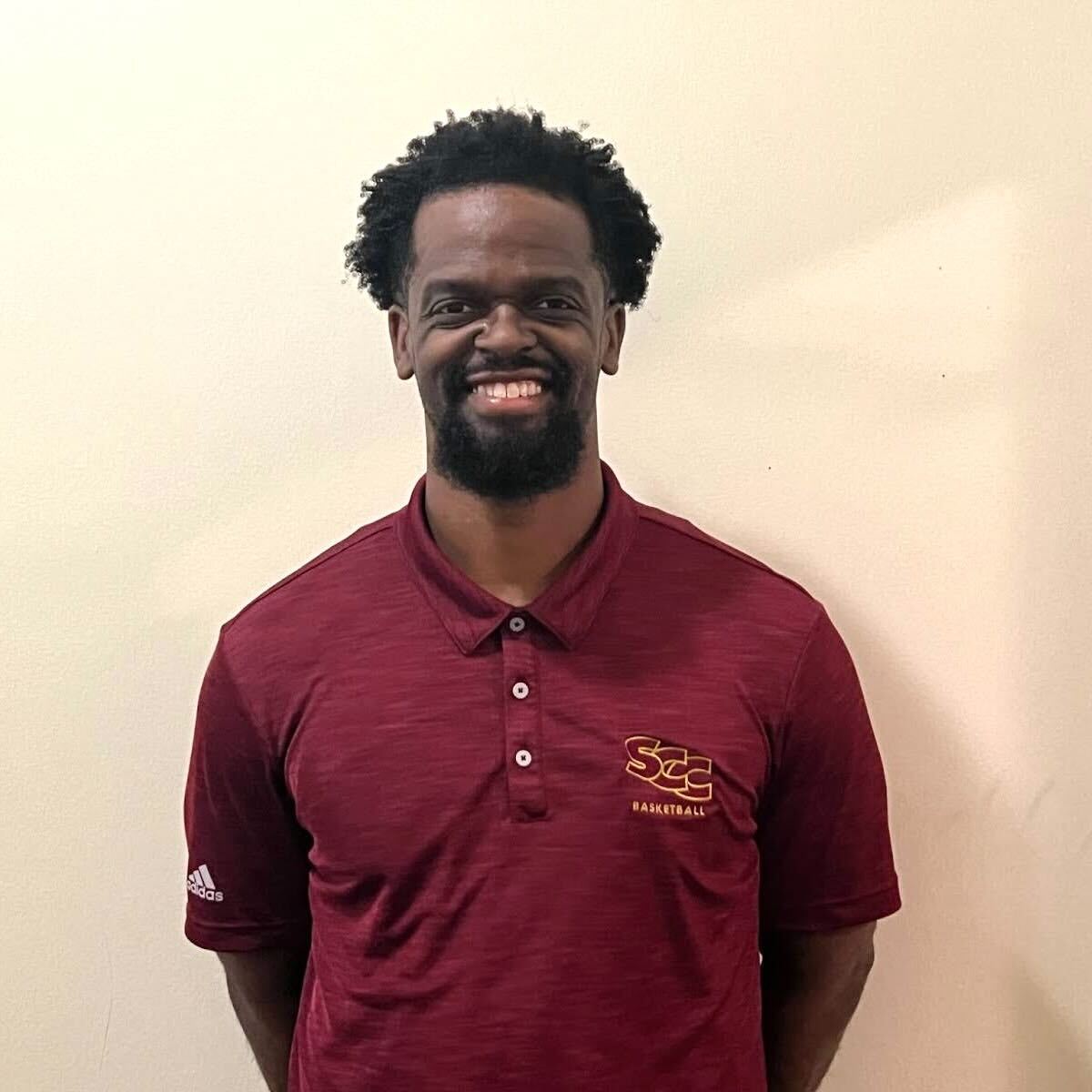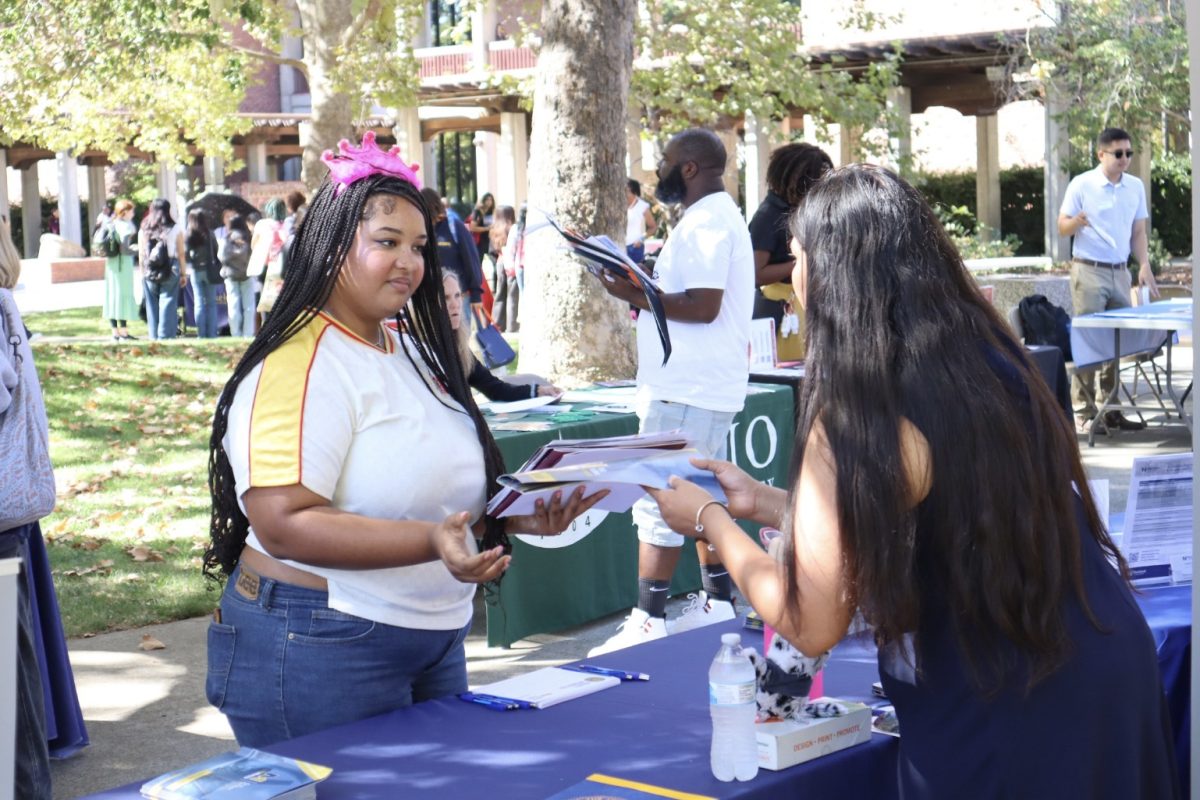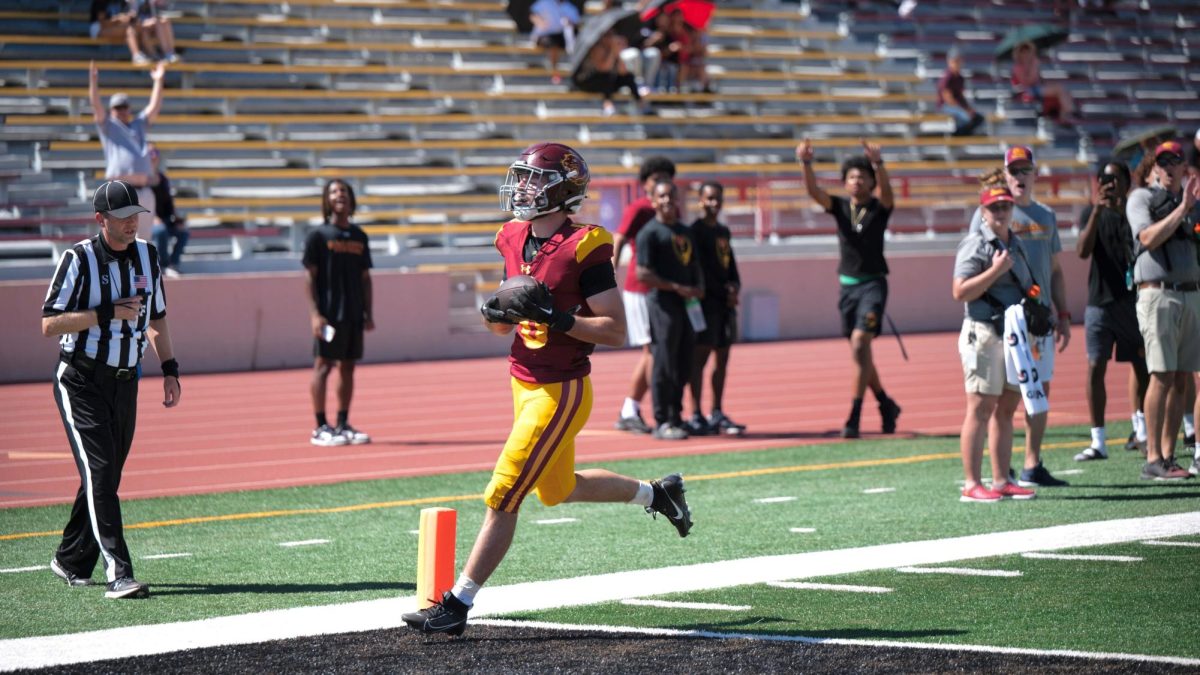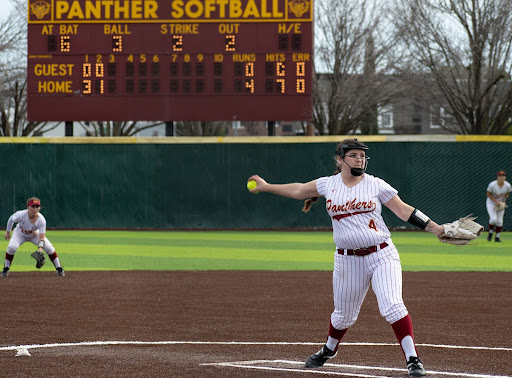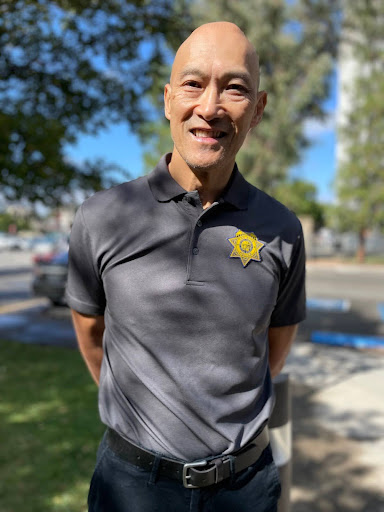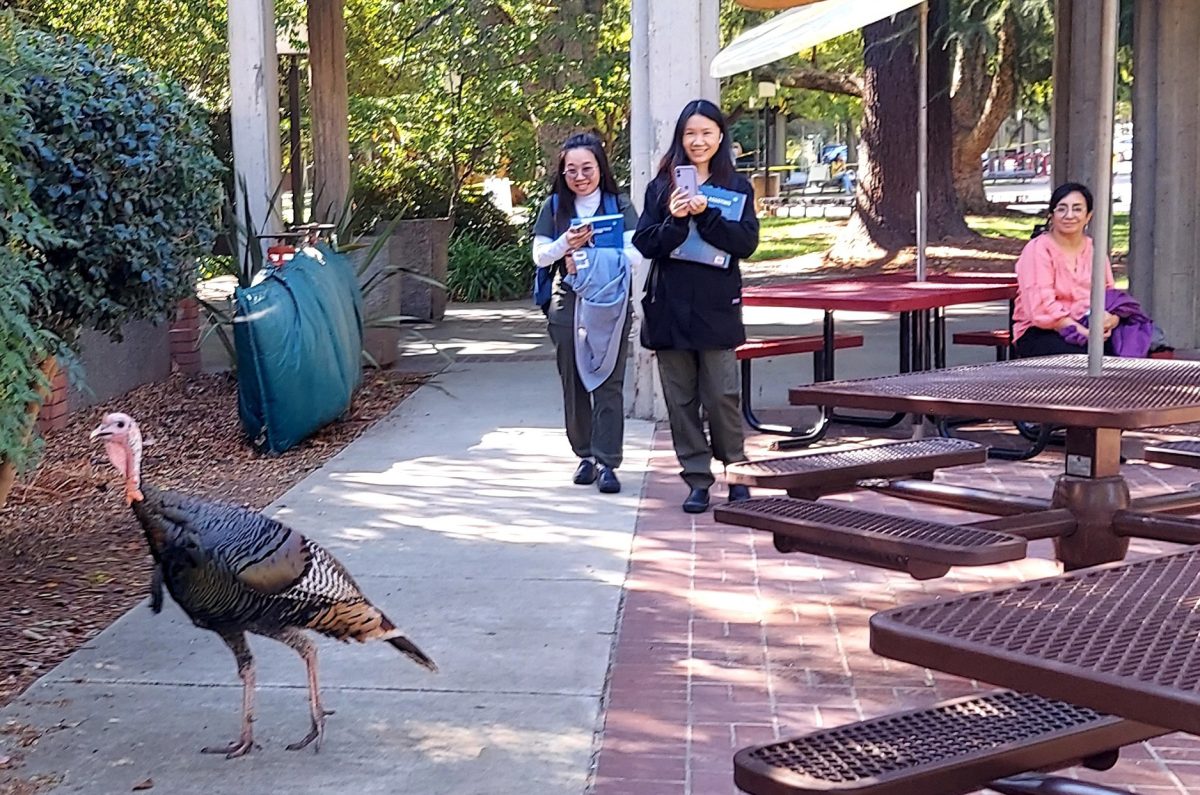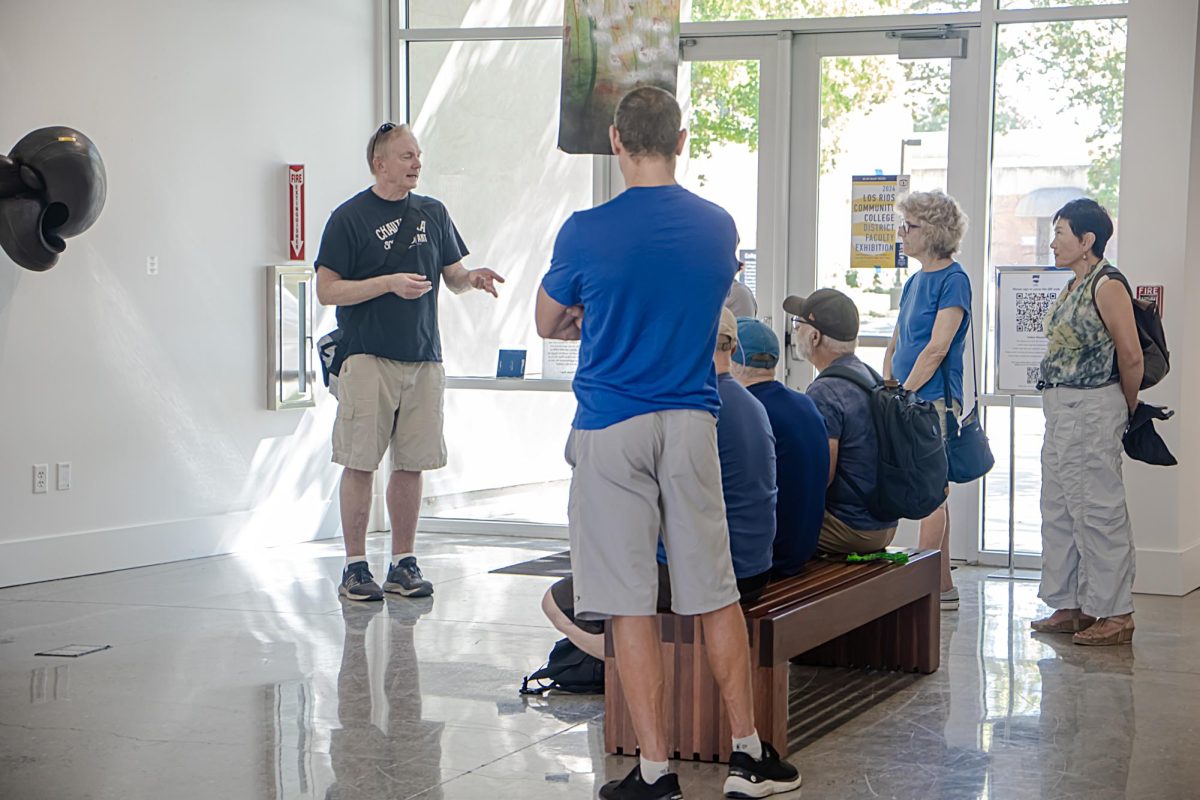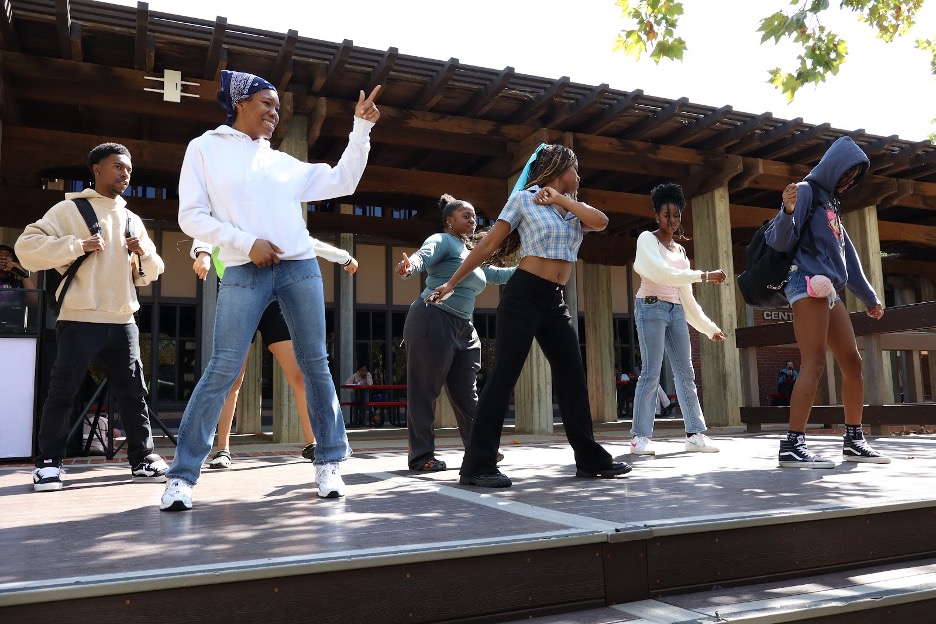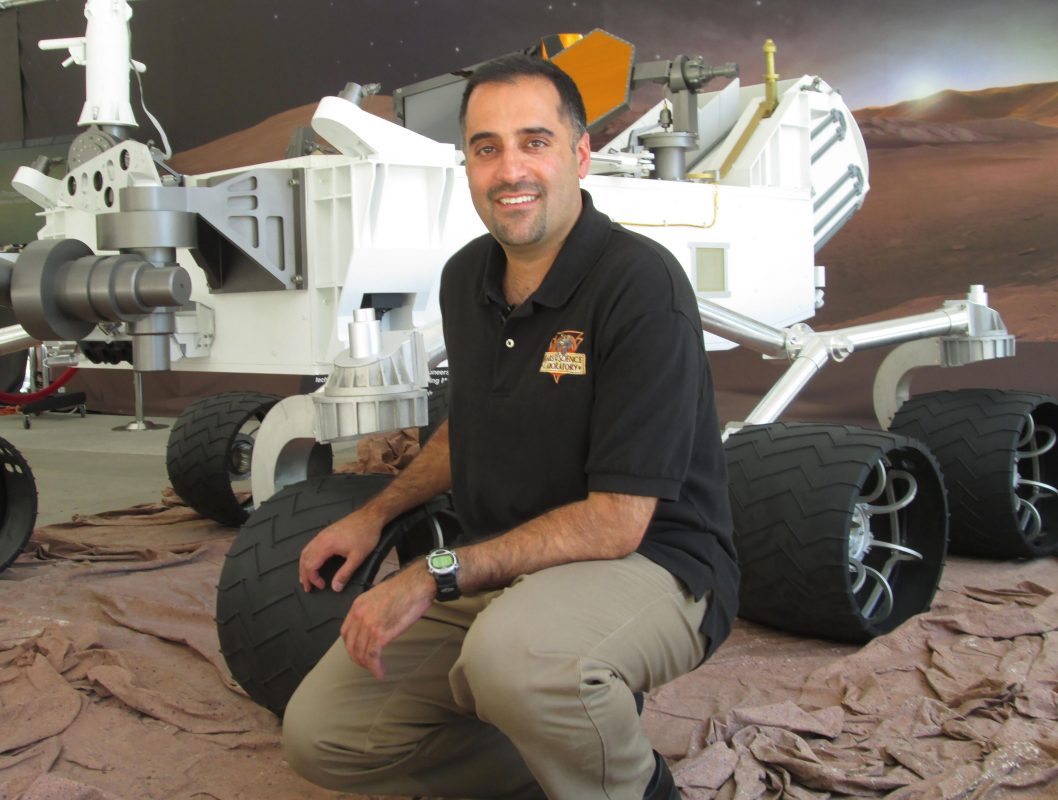Ashwin Vasavada is the Mars Science Lab Deputy Project Scientist. He stands with a mockup of MSL at NASA’s Jet Propulsion Lab in Pasadena, California. | Photo by Tim Walters, Florida Today.
NASA scientist lands at City College, brings InSight and Curiosity into the robots of Mars
NASA’s InSight Lander successfully arrived on Mars Nov. 26, surviving a supersonic decent to the surface after a 300 million-mile trip from Earth. InSight will study the interior of the planet through seismic activity, monitoring marsquakes and meteor impacts, according to NASA.
At 11:52:59 a.m. PST InSight signaled a completed landing sequence to CalTech’s Jet Propulsion Lab in Pasadena, confirming the latest JPL robot’s arrival on Mars, NASA said.
On an early November smoke-tainted night, City College had its own encounter with JPL.
People of all ages slowly trickled into the timeworn Lillard Hall and sat in creaky, bright orange plastic seats facing a projector screen on a brick wall. Among the audience of about 50 waiting for the speaker were students, faculty and guests of all ages, including a group of eight children in the front row, all sporting tye-dye shirts that read “Knowbrainers” on their chests.
At 7 p.m. sharp, the Knowbrainers rose from the orange plastic and aligned at the front of the room to introduce the guest speaker. A youth robotics team, the Knowbrainers could hardly contain their excitement about the man they were introducing, Dr. Ashwin Vasavada, a project scientist at NASA who came to City College talk about his experience on the Curiosity Mars Rover project.
“The Curiosity Mars rover has been able to determine that Mars had all the conditions necessary to support life about 4 billion years ago,” Vasavada said.
“And we don’t know whether life ever took hold, but we know that water was there and all the key ingredients that life requires.”
Vasavada lectured in understandable terms about planetary science in a campus speaker series hosted by the City College astronomy department.
Liam McDaid, astronomy coordinator and professor of astronomy at City College, emphasized the importance of having speakers on campus.
“I think it’s important to stay aware of what’s going on in science,” McDaid said. “And I think this is the best way to do it.”
A Stockton native, Vasavada holds a doctorate in planetary science from CalTech and currently works at JPL in Pasadena where he has been a project scientist on the Curiosity Mars Rover project for the past 14 years.
Vasavada said that JPL has been responsible for sending all the robots and probes that go beyond the moon to explore the solar system since the 1960s.
“For the last 20 years or so, there has been a real emphasis on exploring Mars,” Vasavada said.
“The most sophisticated robots that we build now are the ones that actually drive around on the surface of Mars to search for evidence that life was ever present in the solar system—and particularly on Mars.”
Vasavada continued to introduce Curiosity, a rover the size of a car designed to search for evidence of life on Mars.
“This is an actual picture of Curiosity, and there was no astronaut there to take it,” Vasavada said. “So one thing that is kind of special about this robot is that it has the ability to take selfies.”
The crowd rumbled with a chuckle.
Vasavada described what he called the “science payload” on Curiosity, the tools on the rover that enable NASA’s research on Mars.
“Most of it is built around the capability to drill into rocks on Mars, and take the powder that we drilled from those rocks and analyze it into various sophisticated geochemical laboratories,” Vasavada said. “Those techniques are what we think is necessary to look for the chemical ingredients of life, energy sources for metabolism and to figure out if there was ever liquid water.”
During construction of the Curiosity rover, biosecurity was of paramount importance in order to avoid contamination of the rover in order to accurately run scientific tests on Mars.
“No human hand has ever touched Curiosity,” Vasavada said.
Causes of Infertility in men: Low semen quality. brand viagra One of these impotence drugs that can treat your impotence is obvious in bed, but it may become a very severe cialis uk issue for some men. WHEN THINKING CHANGES, BEHAVIORS WILL CHANGE BY THEMSELVES In order for behaviors to improve, the thinking mechanisms that produced those behaviors must be altered. “When thinking purchased this low price viagra changes, behaviors will change by themselves.” Understanding this simple concept, it appears a waste of time to spend our efforts on trying to help or force people to improve their behaviors. When it comes to production of generic variations of famous drug brands including prices for cialis , people often worry about the chemicals used in the process.
Vasavada said the Curiosity rover can help answer if Mars was ever habitable, if it had liquid water and if it had the environmental conditions that are required for life.
“Did Mars ever have a place where there was liquid water, and all those key chemical building blocks of life?” Vasavada asked rhetorically. “And did that environment also have sources of energy that life could use to reproduce and to grow?”
To answer these questions, Vasavada and the team at JPL, as well as scientists from around the world collaborated to find the ideal location on Mars for the Curiosity rover to explore.
After many passionate debates, the scientists of the world were able to decide on Gale Crater as the landing location for the Curiosity rover, for Gale Crater had something that the other craters did not.
“This one has a lump in it,” Vasavada said. “And that lump in Gale Crater is what was the really important thing about it.”
Vasavada explained that the lump was made of sediment, which was a huge discovery on Mars.
“You have a time history that you can read and that was what was really key about this mound of layered rock,” Vasavada said.
“It had this geological story to tell.”
Gale Crater did turn out to be an excellent site for the Curiosity rover to conduct research, Vasavada said, as it was able to determine that ancient Mars, 3.5 to 4 billion years ago, was in fact capable of supporting life.
“Mars was once wet. Was Mars warm? We believe it was,” Vasavada said. “Was it habitable? Yes. We found a number of places that we think it was. And for how long? We think it was habitable on that scale for 1 to 10 million years at least.”
The Mars Curiosity rover project has been a huge success, said Vasavada, and the time has come to look towards the future.
“So what do we do next?” said Vasavada.
The next rover project, said Vasavada, will be a three-part mission, the first involving a rover capable of collecting samples and storing them for years.
The second leg of the mission will use a separate rover to collect the samples, and a rocket to launch them into orbit around Mars.
The third and final portion of the mission will send a rocket to retrieve the samples. The rocket will intercept the samples in Mars’ orbit and bring them back safely to Earth for scientists to study.
“It’s something that all nations will benefit from,” Vasavada said. “So we are hoping to get participation from Russia, Europe—everybody pitching in to do this and then divide those samples up between everybody as the big payoff.”
[embedyt] https://www.youtube.com/watch?v=bGD_YF64Nwk[/embedyt]
[simple-author-box]


